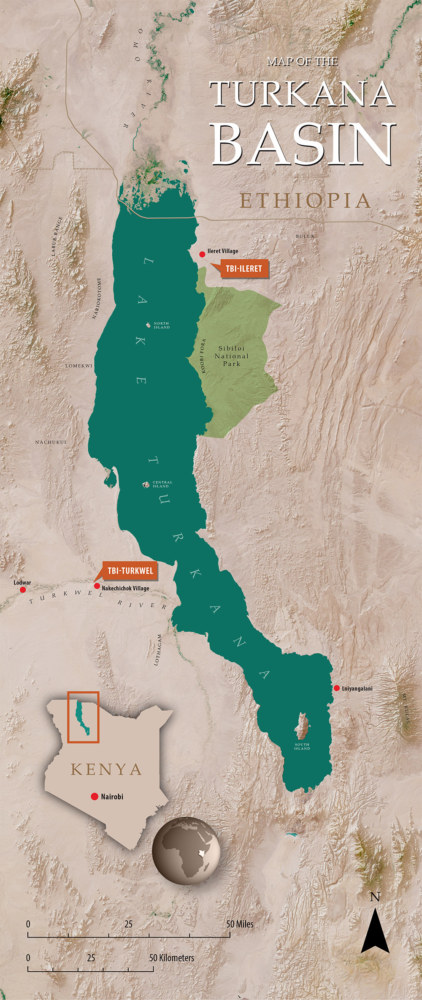The Turkana Basin region is a source of unprecedented fossil and archaeological evidence for all major stages of human development. This is the place where our story is written. Every human being alive today shares DNA inherited from a common ancestral population that we currently believe lived in or within a few hundred miles of the Turkana Basin, about 60-70,000 years ago.
It is an unparalleled window into the past. Within its 7,000 square miles of exposed surface area, rich fossil layers encapsulate major evolutionary events from the Mesozoic era to the present. To the northwest, in exposures throughout the Labur mountain range, a diverse collection of dinosaur and other reptilian vertebrate fossils have been discovered, including carnivorous therapods, herbivorous sauropods, and flying pterosaurs. Early Miocene sites on the northeast side of the lake document the evolution of elephants, rhinoceroses, carnivores, giraffes, pigs, and, notably, the ancestors of old world monkeys and apes shortly after the two diverged. Miocene-age exposures immediately west of the lake have yielded a trove of fossils which have proven critical to understanding the evolution of our own ape ancestors.
It was on the east side of the lake, in the Koobi Fora area, where Richard and Meave Leakey and their colleagues launched their incredible series of groundbreaking hominin discoveries that would form much of the evidence we have for human evolution, expanding later to sites on the west side of the lake which yielded Kenyanthropus platyops and Australopithecus anamensis, the oldest-known hominin to date. Archaeological expeditions in the Turkana Basin have yielded the world’s oldest stone tools. And in sites throughout the region we see the emergence of modern Homo sapiens. Truly, the potential for new, important scientific discoveries in the Turkana Basin is as vast as the region itself.

